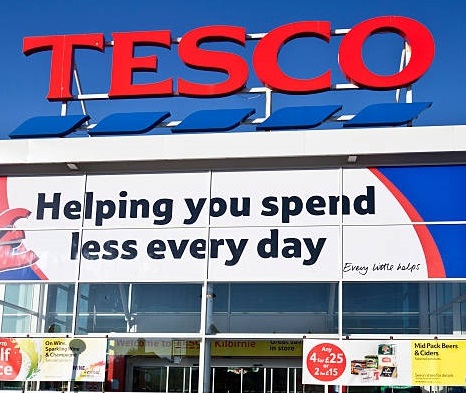All retailers are looking for a competitive edge. To get ahead, some retailers are turning to Operational Research (OR), a powerful set of tools and methodologies to transform their supply chain success.
OR is often referred to as the ‘the art and science of decision making’. It is a discipline that combines advanced mathematics, data analytics, and human insights to tackle intricate business challenges.
Tesco, the UK’s largest grocer, operating over 2,700 stores used OR solutions to meet the daily challenge of managing expiring stock of both food and non-food items and maximising all potential sales revenues.
Tesco’s data science team developed an optimum pricing strategy for items about to be removed from the shelves and the results were phenomenal.
The price reduction challenge
A key step in Tesco’s value chain is what happens at the end of a product’s lifecycle. It is the final opportunity to sell an item to a customer or donate it to the community, so it does not go to waste.
Reducing waste not only increases supply chain efficiency, but it also enhances sustainability, reduces operating costs, and increases profitability.
Like most retailers, Tesco discounts items close to being removed from the shelves. This approach is applied across Tesco’s entire product range, from general merchandise and clothing to fresh food.
However, finding the optimal reduction strategy is a major challenge for every retail business and Tesco was no different. The question to consider was: how much should the price be reduced?
Reduce too little and the item simply will not sell but reduce too much and the sale might become a net loss for the retailer. This task was given to Tesco’s data science team who used OR to develop a novel multi-stage Clearance Pricing Optimisation System and deployed it across all Tesco’s in the UK where it is applied to 100,000s products annually.
How OR techniques were used in practice

The challenge of expiring stock of both food and non-food items is something Tesco faces daily. The team needed to develop a clearance strategy to increase revenue and decrease waste. Tesco employs a product line specific, multi-phase reductions strategy to reduce waste and recover revenues from soon-to-expire stock. The time involved varies depending on the business area.
For example, fresh food items enter a pre-defined three-stage reduction process 24-48 hours before they reach their sell-by-date, with tens of thousands of unique products reduced each year.
But for non-food items covering electronics, home and entertainment, and clothing it can involve a four-stage reduction process, where each stage could last weeks. This means tens of thousands of unique sub-problems: predictions and then optimisations, which scientifically makes it hard and requires diverse types of expertise.
Finally, packaged food items with a long shelf life but highly seasonal demand (e.g. Christmas, Easter, Halloween, and themed items) enter a pre-defined two-stage reduction process after their peak demand. Every seasonal event sees hundreds of unique product reductions across most stores.
Although all these times are different, the challenge is the same. Tesco must calculate an optimal multi-phase pricing strategy that at each stage further reduces the price of the items as they approach their expiry date. However, it is easier said than done. The team identified the solution was likely to involve solving two sub-problems – prediction and then optimisation, which scientifically makes it hard and requires different expertise.
Historical data is not always available to build robust prediction models. Also, given the scale of the task, driven by the high number of products and stores, the optimisation problem is computationally extremely intensive.
Deploying OR techniques were needed to help overcome these challenges and enable the team to build a solution for an optimal pricing strategy that could be applied across all business categories. The key objectives the solution needed to meet were:
- Clear excess stock by a specific date.
- Increase revenue by finding optimal discounts.
- Reduce operational costs and provide further insights of in-store processes.
The team developed the system by first modelling how they expected demand to react if a specific reduction was set – known as the prediction phase. Secondly, they chose optimal reductions that would optimise revenue maximisation – the optimisation phase. Finally, the results are passed to the business – the deployment phase.
A winning solution
Tesco’s solution achieved all its objectives and was a remarkable success. The largest impact of the algorithmic solution was with its fresh food items. Tesco has reduced the number of expiring fresh food items going to waste by 5% which prevents millions of fresh products from being wasted every year.
At the same time, it increased the revenue generated by 1.5-13% across multiple food and non-food product lines. As a result of this successful project, Tesco was awarded the OR Society’s President’s Medal in 2022 for this work. By using OR to solve complex problems, make cost savings, and improve decision-making, Tesco has been able to address a problem faced by every retail business. With two conflicting objectives to not only increase revenue but also reduce waste developing a solution that achieves both is a real winner.






